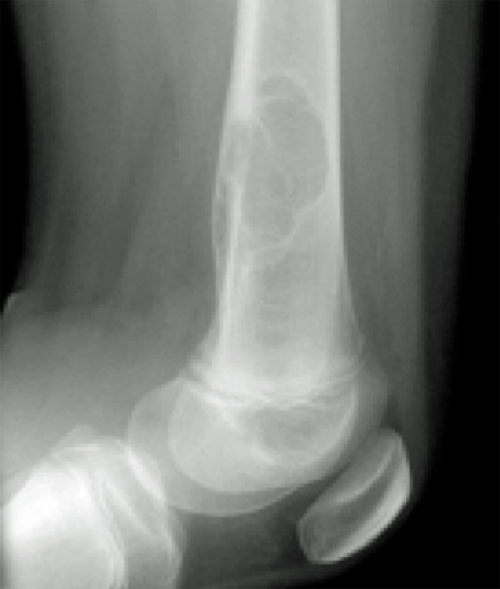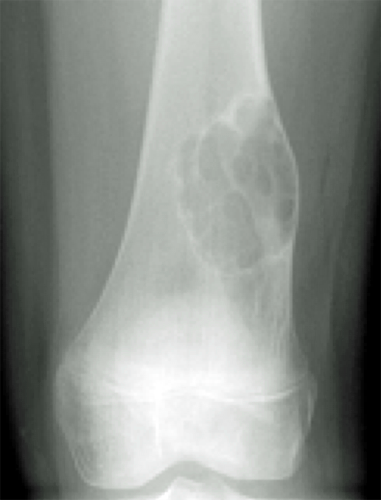Case based Discussion Non Ossifying Fibroma
An 11y old girl twists her knee playing football. She attends A&E and has the following X-rays
Examiner:Please describe the X-rays


Candidate:Distal femur metaphysis. Multiloculated lucent lesion with a sclerotic rim. Well defined/narrow zone of transition. No visible cortical erosion or soft tissue component. Extending to >50% of the width of the bone. These X-rays are insufficient to assess her twisted knee injury.
Examiner:What are the differentials?
Candidate:
- Non ossifying fibroma
- Malignant fibrous histiocytoma
- Eosinophilic granuloma
- Osteosarcoma
- Histiocytic lymphoma
- Pyogenic osteomyelitis